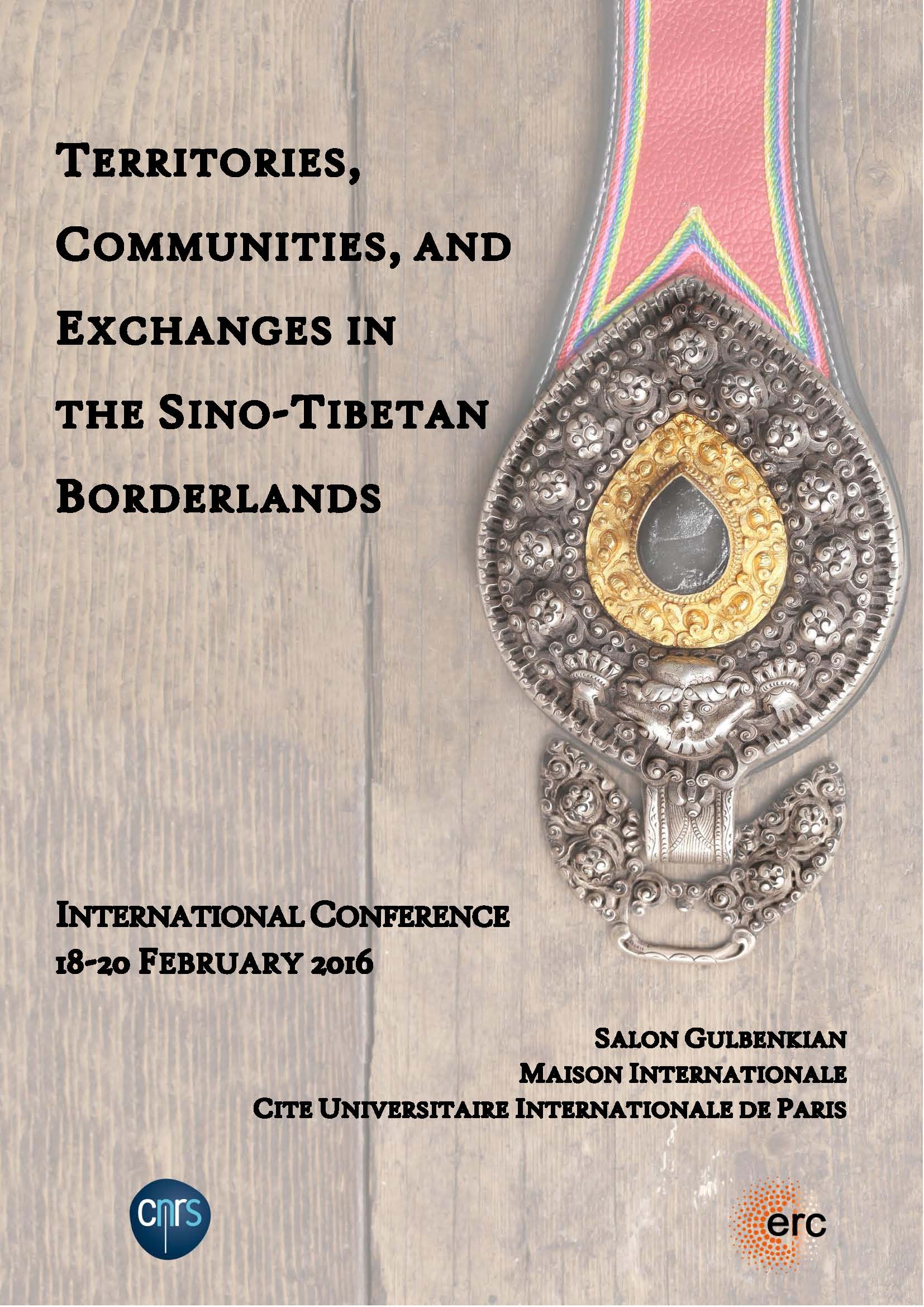Notice
Katia Buffetrille (Ecole Pratique des Hautes Etudes), " The Increasing Visibility of the Borderlands "
- document 1 document 2 document 3
- niveau 1 niveau 2 niveau 3
Descriptif
For centuries, Central Tibet and its capital Lhasa were regarded as the center—as is obviously expressed in the very name of the region in Tibetan, dBus, “Center”—of political and religious life in the Tibetan world; the cultural center where all Tibetans aspire to go, at least once in their lifetime. But changes seem to be taking place, raising questions about a possible increase in the role of the borderlands in Tibetan cultural production. The margins that are A mdo and Khams experience a new visibility at the religious, cultural, and political levels. A mdo is now the scene of a significant cultural revival and the cradle for new expressive forms such as Tibetan film-making. At the same time, Khams and A mdo are experiencing a thriving religious revival, with famous lamas founding new religious places drawing in their vicinity huge settlements of Tibetans from all over Tibet, as well as Chinese devotees. Immolations, the new language of protest, was initiated in these areas. Tourism is flourishing in Khams where rGyal thang has been renamed Shangri la in 2002, attracting as many as 6 millions tourists in 2013, as well as many Tibetans from A mdo and even Lhasa looking for jobs. The main sacred mountains in these Tibetan backwaters, A myes rma chen and Kha ba dkar po, used to attract only local people worshipping their yul lha, are now becoming pilgrimage places for pilgrims from more distant areas of Tibetan plateau. This paper addresses the various factors contributing to this decentralization process and its consequences.
International conference “Territories, Communities, and Exchanges in the Sino-Tibetan Kham Borderlands,” Februray 18-20, 2016. This conference is an outcome of a collaborative ERC-funded research project (Starting grant no. 283870).
For more information, please visit the project's Website: http://kham.cnrs.fr
Dans la même collection
-
C. Pat Giersch (Wellesley College), "Patterns of Inclusion and Exclusion Along Twentieth-Century Ch…
In recent years, increasingly sophisticated work has traced the remarkable changes in early twentieth-century state-building along China's southwestern and Tibetan borderlands. During this same period
-
Lucia Galli (University of Oxford), "The Price of Enlightenment: The Travel Account of Kha stag ʼDz…
Frontier territories characterised by intense socio-economic, political, and cultural inter-actions, in the mid-nineteenth century the easternmost fringes of the Tibetan plateau saw the rise of the
-
John Bray, "French Catholic Missions and Sino-Tibetan Trade: Local Networks and International Enter…
The Missions Étrangères de Paris (MEP) sent their first missionary on an exploratory mission to the Sino-Tibetan borderlands in 1847, and they retained a presence in the region until 1952. Together
-
Isabelle Henrion Dourcy (University of Laval), "Making Movies in the Gesar Heartland: The Burgeonin…
This conference is an outcome of the collaborative ERC-funded research project “Territories, Communities, and Exchanges in the Sino-Tibetan Kham Borderlands” This research project focuses on the
-
Stéphane Gros (Centre National de la Recherche Scientifique), "Matrifocality and the House in Drapa…
GrosStéphaneThe practice of a non-contractual, nonobligatory, and nonexclusive visiting sexual system among a matrilineal group in Southwest China has generated as much interest in anthropology as in the mass
-
Tenzin Jinba (National University of Singapore), " Two Gyalrong Weddings Under Fire: Rethinking of …
Two weddings in 2009 and 2015 respectively have received wide publicity among Tibetans and others within and out of China. The first was that of Lobsang Dundrup, a renowned singer from Gyalrong, and
-
Eric Mortensen (Guilford College)," Boundaries of the Borderlands : Mapping Gyalthang"
This project seeks to discern the physical and conceptual boundaries of the Tibetan region of Gyalthang, in southern Kham. At issue are questions about the relationships between older
-
Scott Relyea (Hamline University), " Settling Authority: Sichuanese Farmers in Early Twentieth Cent…
From 1907 to 1911, some 4,000 commoners from the Sichuan Basin ventured west. Enticed by promises of large tracts of uncultivated land and three years of free rent, seeds, animals, and farm implements
-
Dawa Drolma (Bay Path University), " The Renaissance of Traditional Dzongsar Craft-making in the Me…
As a member of a deeply-rooted traditional craft-making family in the Meshö (Sman Shod) Valley of Kham region, I will present the results of my ongoing fieldwork and academic study on the renaissance
-
Elizabeth Reynolds (Columbia University), " Monasteries, Merchants, and Long Distance Trade: The Ec…
Pre-1959 Tibet was not a “closed off land” as is often assumed, but a place of dynamic economic structures and a diverse body of economic actors. The Trehor region, an area located in modern day
-
Yudru Tsomu (Sichuan University), " Rise of a Political Strongman in Dergé in the Early Twentieth C…
This paper discuses rivalry for the throne of Dergé between 1890 and 1940. In the late nineteenth and early twentieth centuries, internecine feuds created a power vacuum serious enough to invite
-
Mark Frank, " Chinese Physiocracy: Kham as Laboratory for the Agrarian Theory of China "
When a nation-state looks to intensive agriculture for its national essence, what are the implications at the local level? This paper looks at agricultural colonization efforts (tunken屯垦) of the













